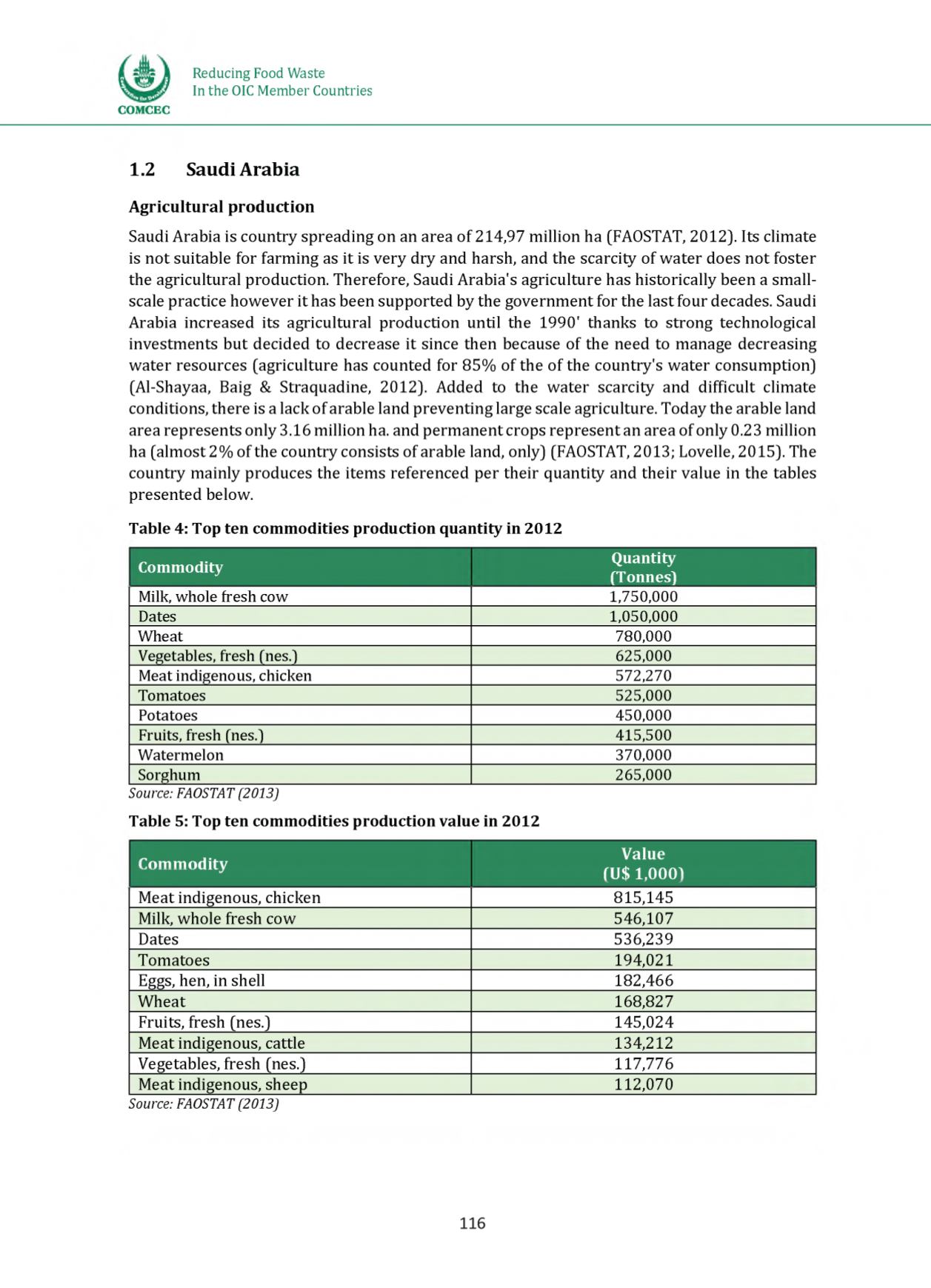

Reducing Food Waste
In the OIC Member Countries
COMCEC
1.2
S a u d i A r a b ia
Agricultural production
Saudi Arabia is country spreading on an area of 214,97 million ha (FAOSTAT, 2012], Its climate
is not suitable for farming as it is very dry and harsh, and the scarcity of water does not foster
the agricultural production, Therefore, Saudi Arabia's agriculture has historically been a small-
scale practice however it has been supported by the government for the last four decades, Saudi
Arabia increased its agricultural production until the 1990' thanks to strong technological
investments but decided to decrease it since then because of the need to manage decreasing
water resources (agriculture has counted for 85% of the of the country's water consumption]
(Al-Shayaa, Baig & Straquadine, 2012], Added to the water scarcity and difficult climate
conditions, there is a lack of arable land preventing large scale agriculture, Today the arable land
area represents only 3,16 million ha, and permanent crops represent an area of only 0,23 million
ha (almost 2% of the country consists of arable land, only] (FAOSTAT, 2013; Lovelle, 2015], The
country mainly produces the items referenced per their quantity and their value in the tables
presented below,
Table 4: Top ten commodities production quantity in 2012
Commodity
Quantity
(Tonnes)
Milk, whole fresh cow
1,750,000
Dates
1,050,000
Wheat
780,000
Vegetables, fresh (nes.)
625,000
Meat indigenous, chicken
572,270
Tomatoes
525,000
Potatoes
450,000
Fruits, fresh (nes.)
415,500
Watermelon
370,000
Sorghum
265,000
Source: FAOSTAT (2013)
Table 5: Top ten commodities production value in 2012
Value
Commodity
(U$ 1,000)
Meat indigenous, chicken
815,145
Milk, whole fresh cow
546,107
Dates
536,239
Tomatoes
194,021
Eggs, hen, in shell
182,466
Wheat
168,827
Fruits, fresh (nes.)
145,024
Meat indigenous, cattle
134,212
Vegetables, fresh (nes.)
117,776
Meat indigenous, sheep
112,070
Source: FAOSTAT (2013)
116
















